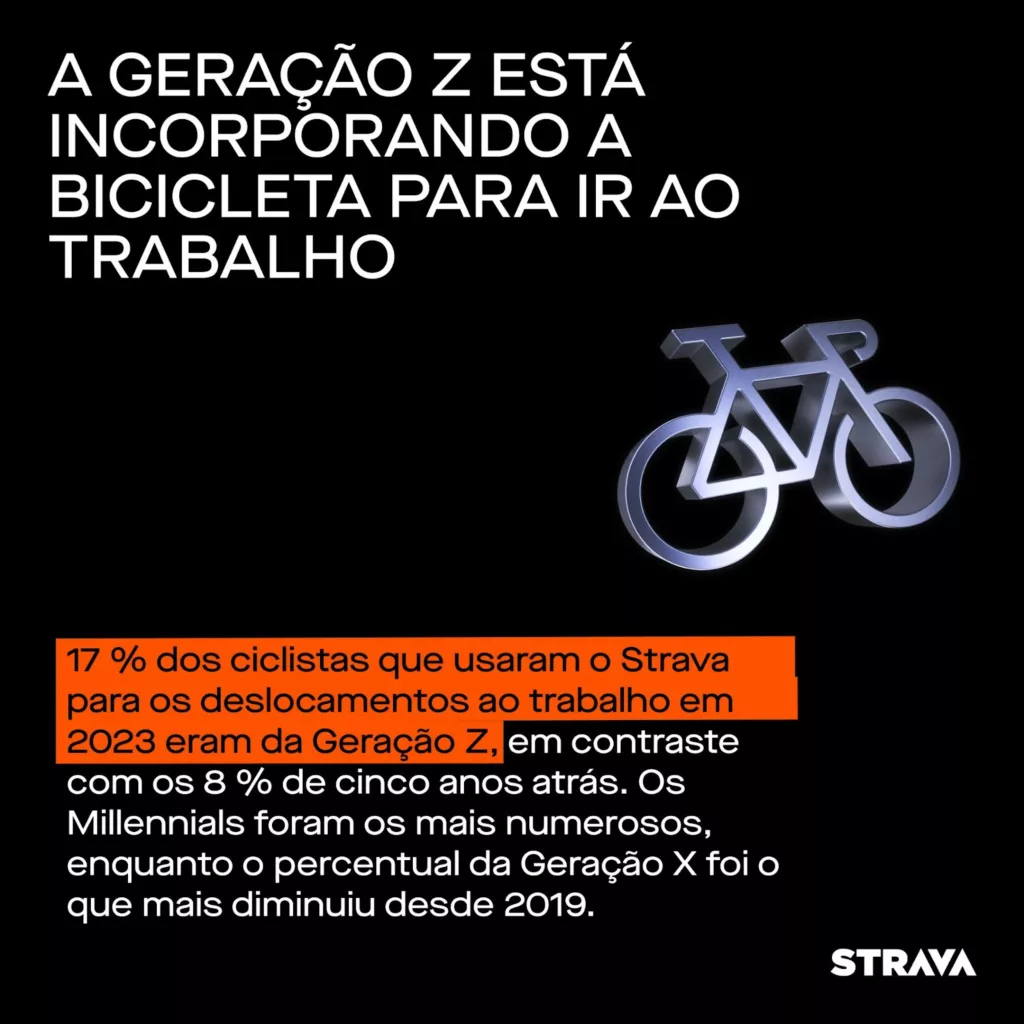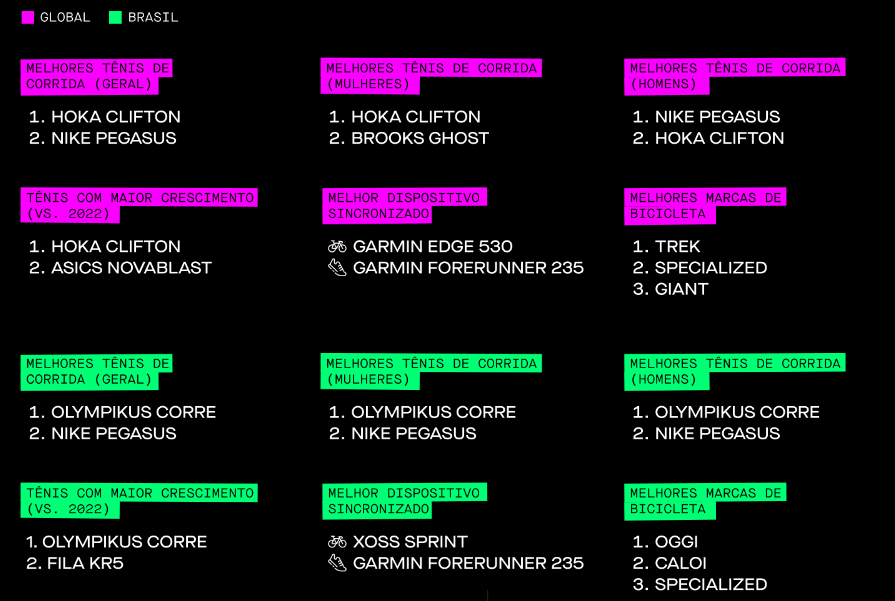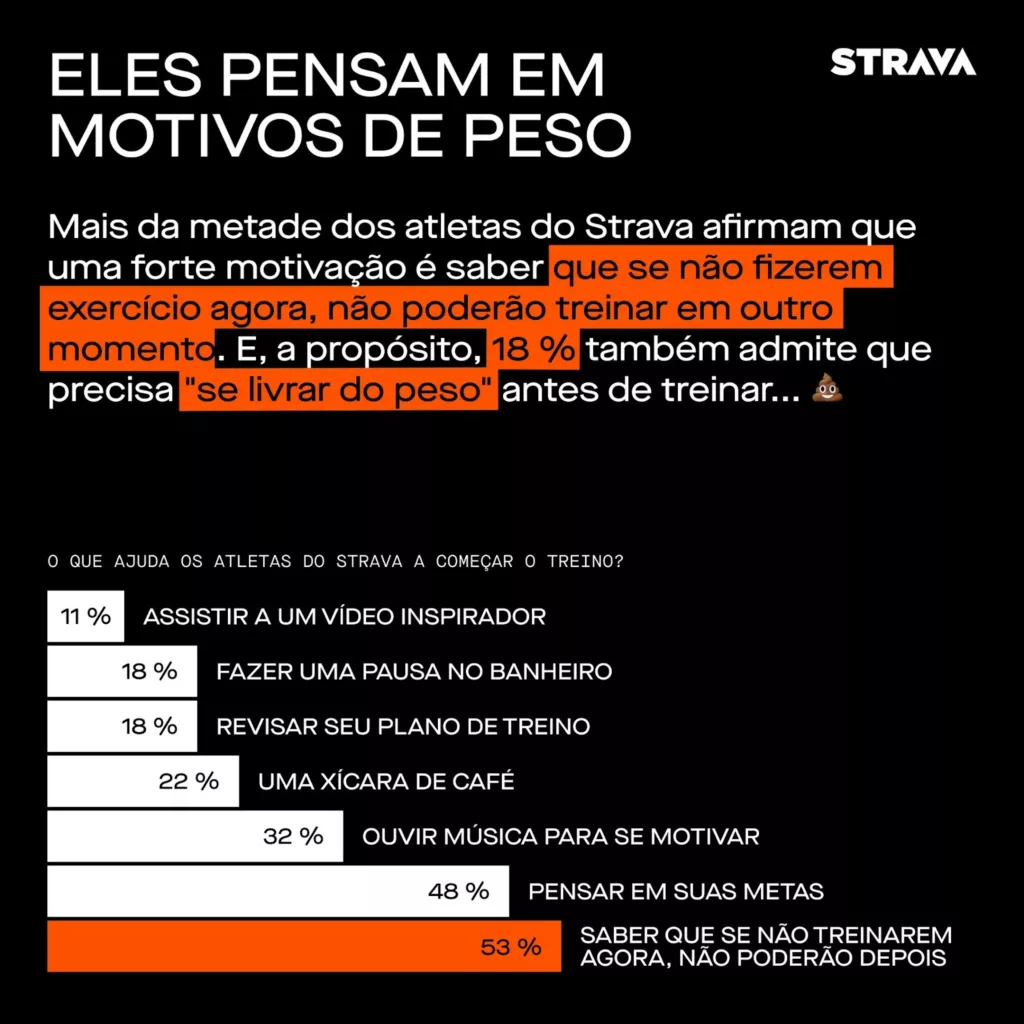Report shows athletes’ preferences, challenges and mobility, revealing insights about clothing, modalities and more.
O Strava, the leading digital community for active people with more than 120 million athletes, announced the publication of the 2023 Year in Sport. This is a report that highlights global and Brazilian trends among athletes of various generations. Data was considered about what motivates them, the obstacles they face and their different interests when it comes to staying active.
As part of this report, Strava conducted a global survey of 6,990 people who play sports, drawn from both the global community and a random sample of sportspeople active on and off the platform. The results, combined with activity data from Strava in 2023, offer new and unique insight into the trends shaping the world of fitness and adventure, and look ahead to what can be expected this year.
In 2023, cyclists’ motivation remained high and the sport was most uploaded on Strava in Brazil, while globally, the race stood out. In second place in the country was walking and, in third place, running. Brazilian athletes also decided to experience more off-road adventures and continued to do more and more activities on gravel bikes and mountain bikes (fourth place), trail runs (fifth place), trail runs (sixth place), and strength training (seventh place). . The last three places were occupied by swimming, virtual (or indoor) cycling and inline skating (eighth, ninth and tenth position, respectively).
Although the most registered group sport of two or more people in 2023 worldwide was rowing, with 40% of the total, in Brazil it was again cycling, with 36% of activities computed on the platform.
(Photo: Disclosure/Strava)
In a breakdown by age, it was observed that athletes of all generations told Strava that the main reason for exercising with other people is social interaction. More than half of the platform’s athletes reported that they are mainly stimulated by friends or family who exercise, and 77% of Generation Z athletes (born between 1995 and 2010) say they feel more connected to each other when seeing their friends’ activities. friends or family on Strava.
When it comes to obstacles to exercising and maintaining a consistent routine, more than two-thirds of athletes of all generations and 61% of Brazilians cited lack of time, caused by work demands, as the main barrier. Another factor of great influence was the climate, with 75% of global athletes and 59% of Brazilians saying that the extreme heat of 2023 affected their training plans, while air quality was mentioned by 27% of athletes globally and by 23% of athletes in Brazil.
Mobility
As previously mentioned, cycling was the most registered activity by Brazilians in 2023, including electric bicycles. The bike was widely used in Brazil also for daily transportation and commuting. Worldwide, 17% of cyclists who used the Strava app to record their commute in 2023 were Gen Z, up from 8% five years ago.

(Photo: Disclosure/Strava)
In Brazil, Millennials (born between 1995 and 2010) were ahead of other generations in terms of mobility. According to data from Year in Sport 2023, over the last four years, this generation has been the majority among cyclists who use two wheels to travel from home to work. In 2022, the percentage of this generation was 55% and, in 2023, this number dropped to 53%, however, it remained ahead of Generation X (born between 1965 and 1981), with 25%, and Generation Z, with 17% responses.
In terms of speed, globally, Gen Z recorded the fastest average pace in runs and cycles on Strava. Furthermore, his runs were the shortest and, in terms of distance, his cycles came in second place. In Brazil, Generation Z registered the fastest runs, and millennials had the fastest cycles. Generation Z’s runs and cycles were the shortest in terms of time.
According to data from Strava’s Year in Sport 2023, theOlympikus Corre was the sneaker most used by Brazilians in running activities. It was also voted the best sneaker by the majority of men and women, as well as the sneaker with the greatest growth in recent years (see image below with global and Brazilian information).

Strava reveals the best sneakers and the brands that had the biggest growth in 2023 (Photo: Divulgao/Strava)
Schedules and goals
Also regarding generations, Strava records in Brazil show that Baby Boomers (born between 1945 and 1964) are the age group that exercises earliest. Around 70% responded that they train before 10 am on weekends, while Generation Z dominates training after 4 pm on weekdays, with 57% of responses.
Strava athletes are 49% more likely to exercise without focusing entirely on their appearance, as are 13% of Strava athletes in Brazil. Generation Z athletes are 31% less likely to exercise solely for health reasons, unlike their Millennial or Generation X predecessors, but rather because they seek better sports performance.
In Brazil, it was recorded that the main motivation for Strava athletes to start their training is the pursuit of their goals, while, in the global survey, it was a question of time (if you don’t train at that time, you won’t be able to do it later).

(Photo: Disclosure/Strava)
Finally, 2023 was a record year for travel activity. Globally, Strava athletes have logged the most runs in the following segments: Berlin Marathon (mile 24), in Berlin, Germany; Sully Morland – Pont Neuf, Quem Bas, in Paris, France; and the Rio 23m Marathon, in Rio de Janeiro (RJ). Among Brazilian athletes, races took over the following segments: firstly, Miguel Lemos x Bolvar, in Rio de Janeiro (RJ); second, Vila Tenente Sapucaia Climb, in Florianpolis (SC); and the Tonlon Runners 200m in third place, in So Paulo (SP).
In terms of cycling, global Strava had the following segments with the most records: Spain, in the Balearic Islands; Auvergne-Rhne-Alpes, in France; and in Limburg, Netherlands. In Brazil, the segments of cyclists with the most registrations were in Campos do Jordo (SP), followed by Estiva (MG) and So Bento do Sapuca (SP).
To access the full report and discover the most popular places to hike, bike and run around the world, see the Year in Sport 2023 trends report.
Follow Adnews on Instagrame LinkedIn. #WhereTransformationHappens




